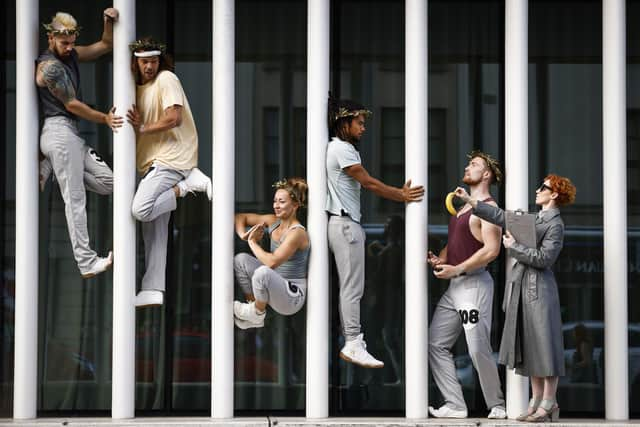The Fringe has walked into a perfect storm of its own making - Stephen Jardine
READThe founder of the longest running venue in Edinburgh says he has “lost confidence” in organisers the Fringe Society. Assembly’s Artistic Director William Burdett-Coutts claims it has failed to properly plan the comeback leading to the biggest “existential crisis” in the 75 year history of the Fringe.
Alongside the largest promoter, many acts are also unhappy. More than 1,200 signed an open letter raising concerns about the handling of the run up to this year’s return event.
Advertisement
Hide AdAdvertisement
Hide AdAnger has been focussed on the failure to come up with a booking app and the poor communication surrounding that. For acts starved of revenue over lockdown, a glorious return to Edinburgh has instead become mired in arguments over organisation, accommodation costs and just what they get
in return for their registration fee.
It should never have come to this.
For the past decade there have been rumblings about the growth of the event and the way it increasingly felt like something being done to the city rather than with it.


Increasing traffic and pedestrian bottlenecks led Edinburgh City Council to commission research into local attitudes to the Festival and Fringe. It concluded that growing negativity “represents a strategic risk to the long term success of the city region”. And yet, it just kept on growing.
The hiatus of the past two years should have represented an opportunity for a fundamental rethink and review. It was a chance to revisit the original mission and vision and to ask the people of Edinburgh what they want to see from an event that has grown from just eight theatre companies back in 1947 to over 3,000 shows this year.
In contrast to those early days, the Fringe is now dominated by the big venue operators who float on alcohol sponsorship and scooping up the biggest acts and audiences. That is not what the Fringe was about when it started. Is it what we want it to be moving forward?
Similarly, Edinburgh has completely changed as a city over the past 75 years yet the Fringe remains focussed on an increasingly choked and congested city centre.
It took outgoing Festival boss Fergus Linehan to outline a vision this week to break out and create a new cultural quarter on Edinburgh’s Waterfront providing space for rehearsal and performance. That would not only take the pressure off the city centre but also spread some of the benefits of August to other parts of the city.
The Fringe Society said they will take on board all the concerns that have been raised.
Advertisement
Hide AdAdvertisement
Hide AdWhen you have venues, performers, local people and even the city council flagging concerns about the organisation and the impact of the world’s biggest arts event, that represents a perfect storm that cannot just be ignored. Business as usual was never going to be an option but neither is a Fringe that just gets bigger without changing and evolving to meet different circumstances.
The past two years were an opportunity to reflect that has been wasted but despite the return of the Fringe this August, the calls for fundamental change won’t go away.
